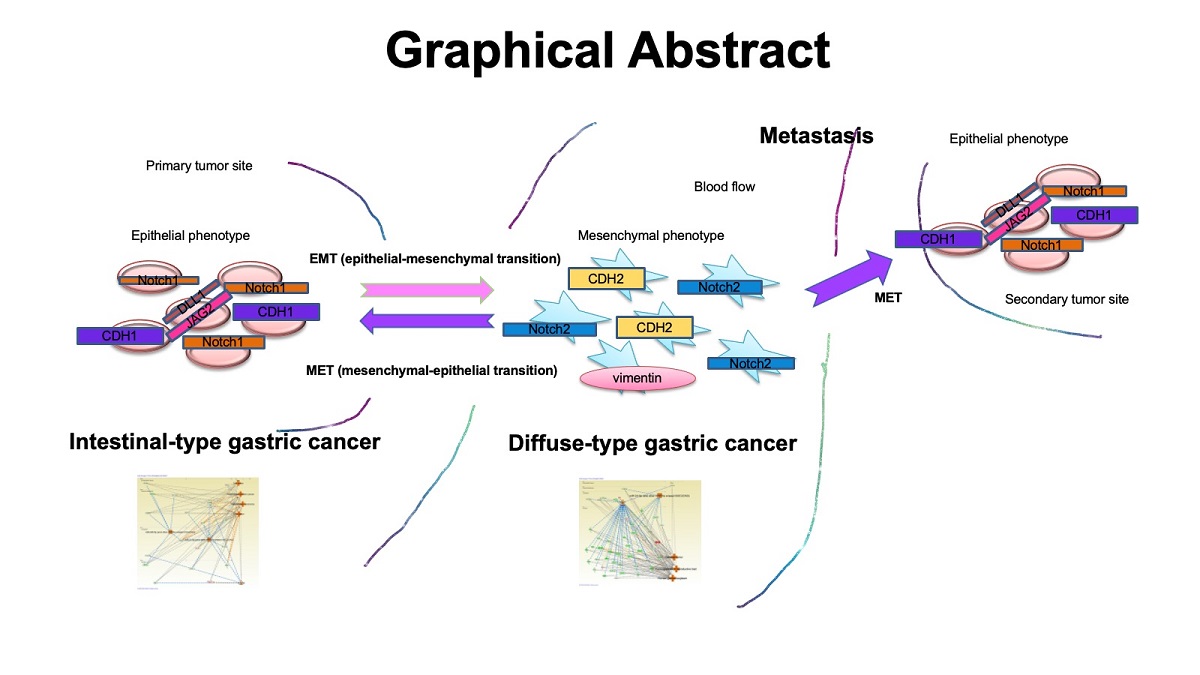Epithelial-mesenchymal transition (EMT) plays an important role in the acquisition of cancer stem cell (CSC) feature and drug resistance, which are the main hallmarks of cancer malignancy. Although previous findings have shown that several signaling pathways are activated in cancer progression, the precise mechanism of signaling pathways in EMT and CSCs are not fully understood. In this study, we focused on the intestinal and diffuse-type gastric cancer (GC), and analyzed the gene expression of public RNAseq data to understand the molecular pathway regulation in different subtypes of gastric cancer. Network pathway analysis was performed by Ingenuity Pathway Analysis (IPA). Total 2815 probe set IDs were significantly different between intestinal- and diffuse-type GC data in cBioPortal Cancer Genomics. The 10 genes including male-specific lethal 3 homolog (Drosophila) pseudogene 1 (MSL3P1), CDC28 protein kinase regulatory subunit 1B (CKS1B), DEAD-box helicase 27 (DDX27), golgi to ER traffic protein 4 (GET4), chromosome segregation 1 like (CSE1L), translocase of outer mitochondrial membrane 34 (TOMM34), YTH N6-methyladenosine RNA binding protein 1 (YTHDF1), ribonucleic acid export 1 (RAE1), par-6 family cell polarity regulator beta (PARD6B), and MRG domain binding protein (MRGBP) were found to have difference in gene expression in intestinal- and diffuse-type GC. Total 463 direct relationships with 3 molecules (MYC, NTRK1, UBE2M) were found in the biomarker-filtered network generated by network pathway analysis. The networks and features in intestinal- and diffuse-type GC have been investigated and profiled in bioinformatics. Our results revealed the signaling pathways networks in intestinal- and diffuse-type GC, bringing new light for the elucidation of drug resistance mechanisms in CSCs.

